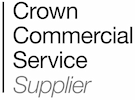Call for Evidence: Inclusion in Practice Emerging Insights
The much-anticipated report by Tom Rees and his colleagues has now been published. Tom was appointed Chair in November, as part of the government’s SEND inclusion in education expert group.
The report showcases
what is already happening in schools to support inclusive practice for children and young people with special educational needs and disabilities (SEND).
These observations are contained within five Insights. This blog will focus on Insight 1: Knowing children well, early and often
Insight 1: Knowing children well, early and often
As would be expected, transition is at the heart of this insight. It is a time of change, and in common with most changes, is one of both concern and opportunity.
The report states the
importance of planning ahead, meeting families, and sharing insight across phases and settings to strengthen continuity of support.
This was particularly important for those pupils who have specific needs, such as SEND. The interventions taken by schools is most impressive. Actions include
- Visiting each primary school to review existing support
- Creating small group sessions to meet key adults
- Summer term academic and enrichment activities
- Inviting selected pupils to summer schools
These interventions,
Gave [staff] time to form relationships and begin adapting support
Sometimes this would require multi-agency support.
A response from Pupil Pathways
In order for these interventions to happen, the secondary school needs accurate and detailed information about each child, and they need it early. If it arrives late, then there is too little time to intervene before the start of the summer holidays.
At Pupil Pathway, our SixIntoSeven service helps this process in the following ways
- We work with the schools and local authorities to use staggered transfer deadlines. Those children who are classed as vulnerable have their data uploaded and transferred first.
- The information is transferred in a consistent manner. A typical secondary will welcome children from 15 or more primary schools, with some receiving from three or four times that number. When this comes through SixIntoSeven, the data is in a standard form, so that needs can be more easily evaluated and scarce support fairly allocated.
- As all the information is in one place, it can be immediately shared with the local authority for more efficient decision making.
The Pupil Passport
The report mentions that in some schools, the pupils help create their own pupil passports. At Pupil Pathways, we understand the value of such documents as they help pupils navigate journeys between schools and other establishments.
We view the profile in SixIntoSeven as a passport. The information within is the combined knowledge of the staff at the primary school: staff who have looked after the child for six or more years and know the family well. Without this knowledge, it is extremely difficult to maintain continuity of care and progress.
The Long transition
The report is clear that transition process continues long after the early days and weeks in September, with references to the
SENDCO, safeguarding lead, and pastoral staff as a “team around the child”
And that
Teachers were encouraged to raise concerns early, supported by a clear referral process and termly consultations The expertise from the primary school to be found in SixIntoSeven remains valid and is therefore accessible throughout Y7.
Conclusion
As with all such reports, the final words should be left to the Chair.
Tom Rees noted that in the future these is a need for “clearer use of evidence, sharper accountability, smarter systems, and putting children’s needs – not labels – at the centre.”
Please contact us to see how we could help your schools get to know the children well, early and often



